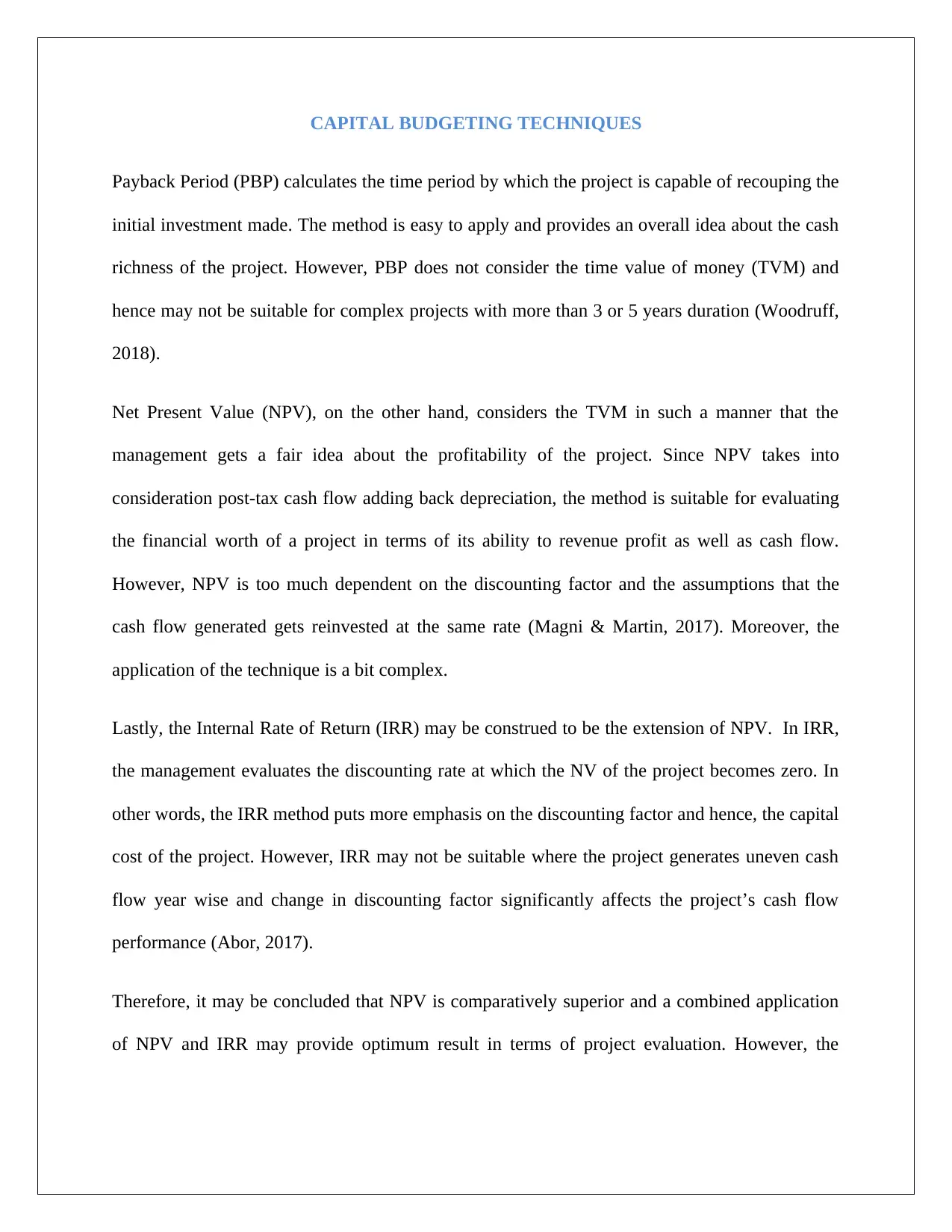Capital Budgeting Analysis: Evaluating Investment Projects Methods
VerifiedAdded on 2023/04/21
|3
|434
|322
Report
AI Summary
This report delves into the critical aspects of capital budgeting, exploring the methods used to evaluate potential investment projects. It examines the Payback Period (PBP), Net Present Value (NPV), and Internal Rate of Return (IRR) techniques, highlighting their strengths and weaknesses. The report emphasizes the importance of considering the time value of money and the implications of different discounting rates. It provides a comparative analysis of the methods, suggesting that a combined approach using NPV and IRR can offer optimal results, while also emphasizing the need to consider external factors. The report also includes references to relevant academic sources to support the analysis and findings. Overall, the report aims to provide a comprehensive understanding of capital budgeting techniques for effective project evaluation and investment decisions, ensuring that the management considers all the factors before applying the techniques.
1 out of 3










![[object Object]](/_next/static/media/star-bottom.7253800d.svg)